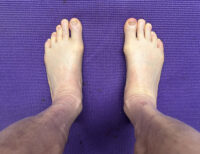In spite of or possibly in reaction to California’s worst drought in 120 years, I suddenly find myself surrounded by neighbors building swimming pools. Five homes within 200 feet already have pools and two more even closer have completed the construction phase and have moved into pumps, pipes, connections, tiling and landscaping.
These are not kiddie pools, but large rectangular pools dug deeply, designed to hold 20,000+ gallons of water. I don’t know if it has occurred to my neighbors that current City of Sonoma regulations prohibit using city water to fill pools; perhaps they plan to employ a convoy of tanker trucks to do the job. One thing is certain: given the $50,000+ it costs to build a pool, the water will come.
Experiencing drought is an elemental human event, but something to which we are so unaccustomed that even as greater restrictions are placed on water, we continue to behave as if all will be fine. Sod gets laid, lawns get sprinklered, life goes on; all the while reservoirs are dropping and climate scientists predict that California will suffer “persistent, ubiquitous drought in the 21st century” (NY Times). Perhaps filling a swimming pool represents a life-affirming act of denial, but denial it is nonetheless. In a worst case scenario fire trucks can suck out the pool water if hydrants fail and fires burn.
Entire civilizations have been undone by “persistent, ubiquitous drought.” Researchers believe the Aztec civilization, which lasted 600 years and included major cities of tens of thousands, ultimately collapsed when rains failed and water for agriculture failed to materialize. Speculation is that the inhabitants of those cities simply left and returned to the less urban but more resourceful jungle life. This is not, of course, an option open to us here in Sonoma, surrounded as we are by developed land and adjacent to the Bay Area Megalopolis – though learning to leach, bleach and pound acorns to flour might be prudent.
Fifteen years ago, while serving in office on the City Council, I made the case for imposing mandatory groundwater regulations to report and control the pumping of groundwater. At the time, studies indicated that brackish water from the Bay filling the void created by well pumping had moved up-valley more than a mile in just twenty years, rendering some well water unfit for consumption or irrigation. Ultimately, just voluntary compliance was put in place and only now are mandatory regulations appearing, perhaps too little, too late. Moreover, vineyard development continues to expand alongside a tourist economy drawing increasingly large crowds into the Valley year-round. We are dependent upon the Russian River for most of our water, and it too is threatened.
Government is so timid that regulations dictating restaurants not serve glasses of water unless requested are seen as a big step. Use reductions are imposed on homeowners and municipalities, despite the fact that agriculture uses 80% of California’s potable water. Lawn-watering gets limited to two-days-per-week, but no time limit is set on how long one can water. One wonders what it will take for people to understand just how serious this situation is. It has been building and coming a long time, and unless the weather pattern miraculously changes, things will likely get far worse, and perhaps quickly.
Ultimately, those chlorinated neighborhood swimming pools may become life-saving watering holes for Sonoma’s thirsty citizens.






Be First to Comment